How to Create a Routine That Encourages Cat Socialization
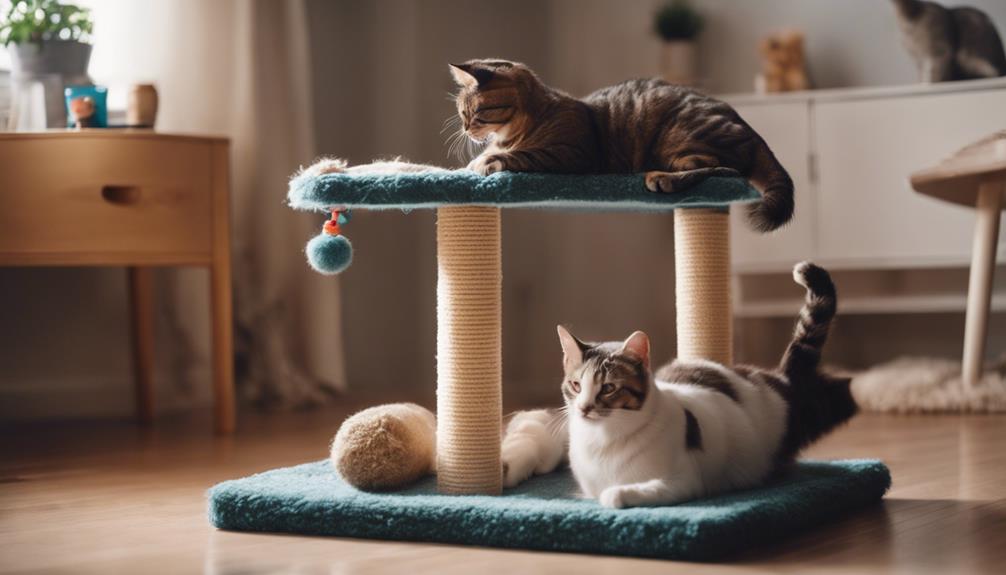
Creating a cat socialization routine is essential for developing healthy relationships with your feline companion. Start by establishing a consistent daily schedule that includes feeding, playtime, grooming, and bonding activities.
Introduce new experiences gradually and positively reinforce good behavior with treats or praise. Provide a safe and comfortable environment where your cat can explore and interact with you.
Remember to respect your cat's boundaries and allow them to initiate interactions on their terms. By following these key strategies, you can build a strong bond with your cat based on trust and understanding.
Setting a Consistent Feeding Schedule
Establishing a regular feeding routine is crucial for socializing your cat effectively. Scheduled meals not only provide structure and predictability for your feline companion but also offer opportunities for bonding time. By feeding your cat at the same times each day, you create a sense of security and routine that can help in building trust and strengthening your relationship.
To enhance the bonding experience during feeding time, consider using interactive feeders. These feeders engage your cat's natural hunting instincts, providing mental stimulation and physical activity. Interactive feeders can also help prevent overeating and promote healthier eating habits for your cat. Additionally, interactive feeders can be a fun way to bond with your cat as you both enjoy the challenge of getting the food out.
Incorporating scheduled meals and interactive feeders into your cat's routine can significantly contribute to feline bonding. Consistency and engagement during feeding time can create lasting positive associations and strengthen the bond between you and your cat.
Implementing Regular Playtime Sessions
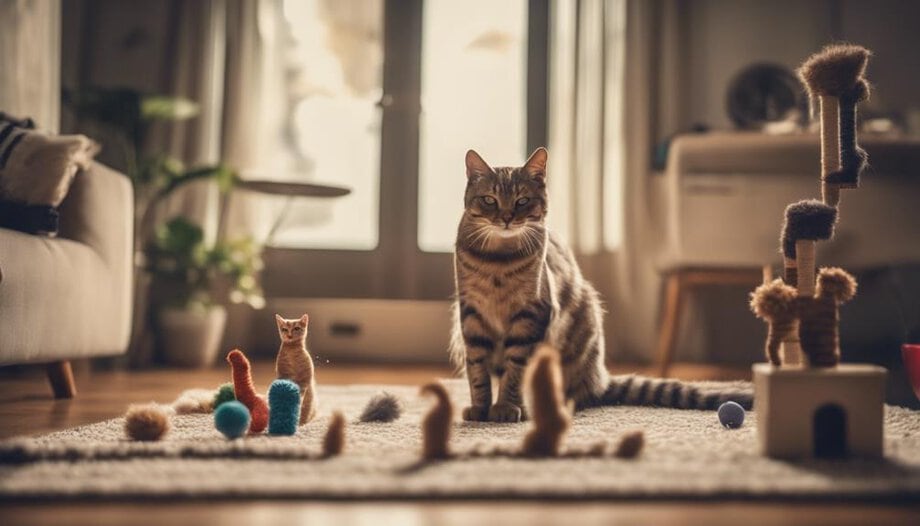
Incorporating regular playtime sessions into your cat's daily routine is essential for their physical and mental well-being. Playtime not only provides exercise but also strengthens the bond between you and your feline friend. Here are some key points to consider when implementing playtime sessions:
- Interactive Toys: Invest in toys that promote activity and engagement, such as feather wands, laser pointers, or puzzle feeders.
- Bonding Activities: Use playtime as an opportunity to connect with your cat through interactive games like hide-and-seek or gentle wrestling.
- Stimulating Environment: Create a dynamic play area by incorporating climbing structures, scratching posts, and cozy hiding spots.
- Enrichment Ideas: Rotate toys regularly to keep your cat mentally stimulated and prevent boredom. Consider introducing new activities like clicker training or DIY treat puzzles to enhance their playtime experience.
Providing Safe Exploration Opportunities
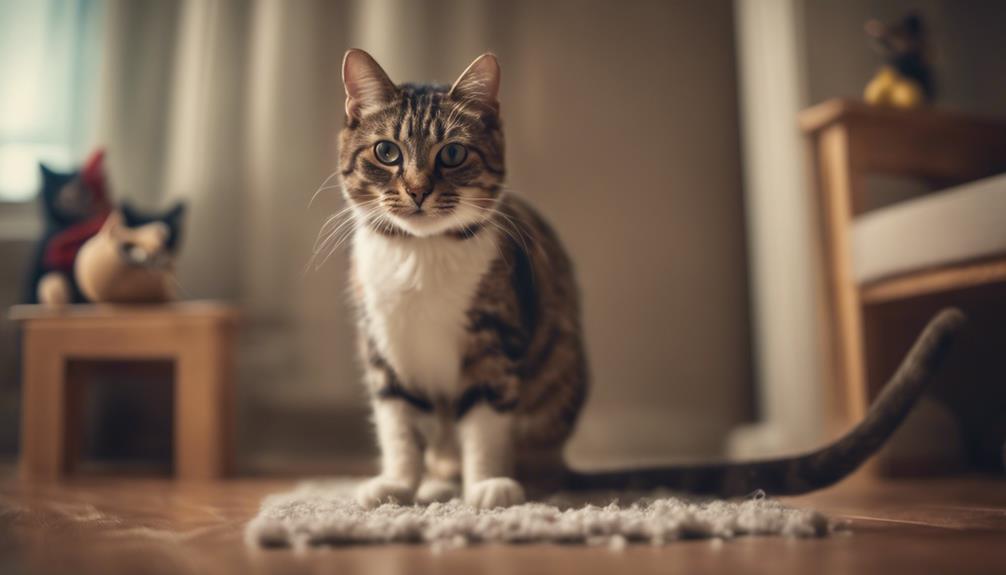
To ensure your cat remains engaged and fulfilled, offer safe exploration opportunities within your home environment. Enrichment activities such as puzzle feeders, cat trees, and interactive toys can provide mental stimulation and encourage physical activity. Interactive toys like feather wands or laser pointers can engage your cat's hunting instincts and promote playfulness.
While outdoor exposure can be beneficial for a cat's overall well-being, it's essential to provide this in controlled environments such as enclosed outdoor spaces or supervised walks on a leash. This allows your cat to experience the sights, sounds, and smells of the outdoors while ensuring their safety.
Creating designated areas for exploration, such as cat shelves or window perches, can also enrich your cat's environment by offering vertical space to climb and observe their surroundings. Additionally, rotating toys and rearranging furniture periodically can keep your cat curious and engaged in their environment. By providing safe and stimulating exploration opportunities, you can help your cat socialize and thrive in their home environment.
Offering Positive Reinforcement Techniques
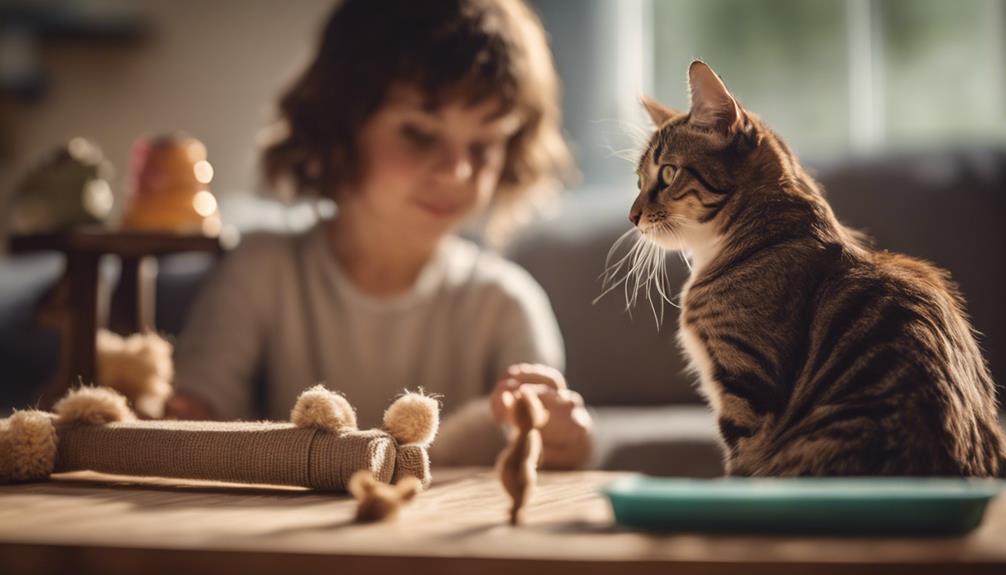
Positive reinforcement techniques, such as using treats or praise, can be effective in encouraging desired behaviors in your cat. When implementing these techniques, consistency is key to reinforcing positive habits.
Here are some ways to effectively utilize positive reinforcement techniques with your cat:
- Clicker training: This method involves using a clicker to create a distinct sound associated with a reward, helping your cat understand which behaviors are desirable.
- Treat rewards: Offering small, tasty treats when your cat displays good behavior can reinforce positive actions and create a strong bond between you and your feline friend.
- Interactive toys: Engaging your cat with interactive toys can provide mental stimulation and encourage playful behavior, which is essential for socialization.
- Scratching posts: Providing appropriate scratching posts and rewarding your cat when they use them can help deter unwanted scratching behavior on furniture.
Creating Quiet Retreat Spaces
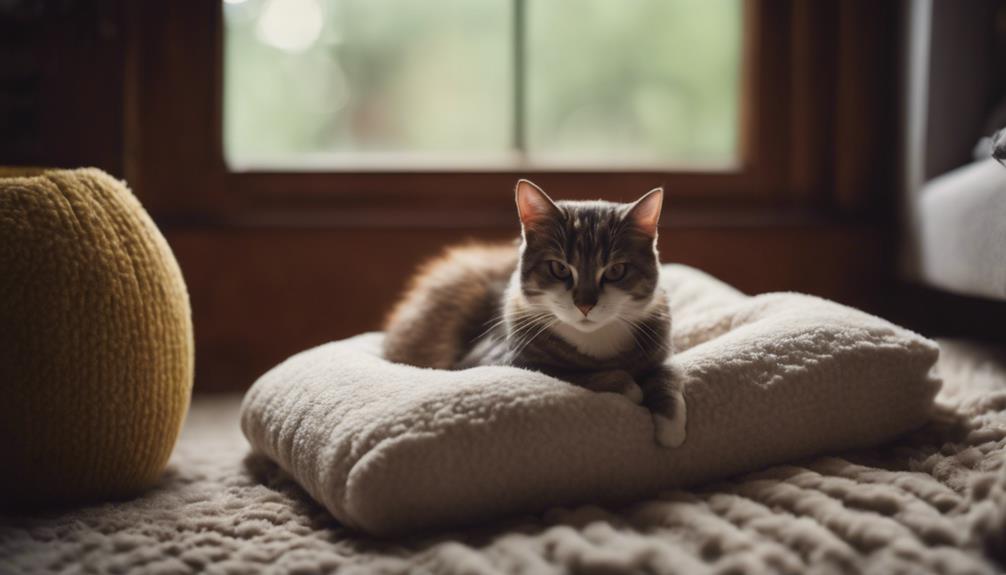
Cat socialization routines can greatly benefit from the creation of quiet retreat spaces within a home. Safe hiding spots and cozy resting areas offer cats the opportunity to retreat when feeling overwhelmed or overstimulated.
Safe Hiding Spots
Ensuring there are safe hiding spots in your home can greatly benefit the socialization process for your feline friend. Cats often seek out secluded areas when feeling overwhelmed or anxious, making it essential to provide them with secure spaces where they can retreat and feel safe. Here are some suggestions for creating safe hiding spots:
- Comfortable perches: Offering cozy elevated spots where your cat can observe their surroundings.
- Interactive toys: Providing engaging toys in these spaces can help your cat feel more comfortable and entertained.
- Secure tunnels: Cats enjoy exploring enclosed spaces, so tunnels can be a great addition to their hiding spots.
- Elevated shelves: Creating vertical spaces gives your cat the option to be up high, which many cats find comforting.
Cozy Resting Areas
Creating a peaceful haven for your feline companion to rest and recharge is crucial for their overall well-being and socialization success. Soft bedding placed in warm nooks provides the perfect retreat for your cat to unwind and feel safe.
Cats naturally seek out cozy spots to relax, so incorporating plush blankets, cushions, or cat beds in quiet areas of your home can help create a sense of security. Ensure these resting areas are away from loud noises and high traffic areas to give your cat the peace and quiet they need.
Introducing Controlled Social Interactions
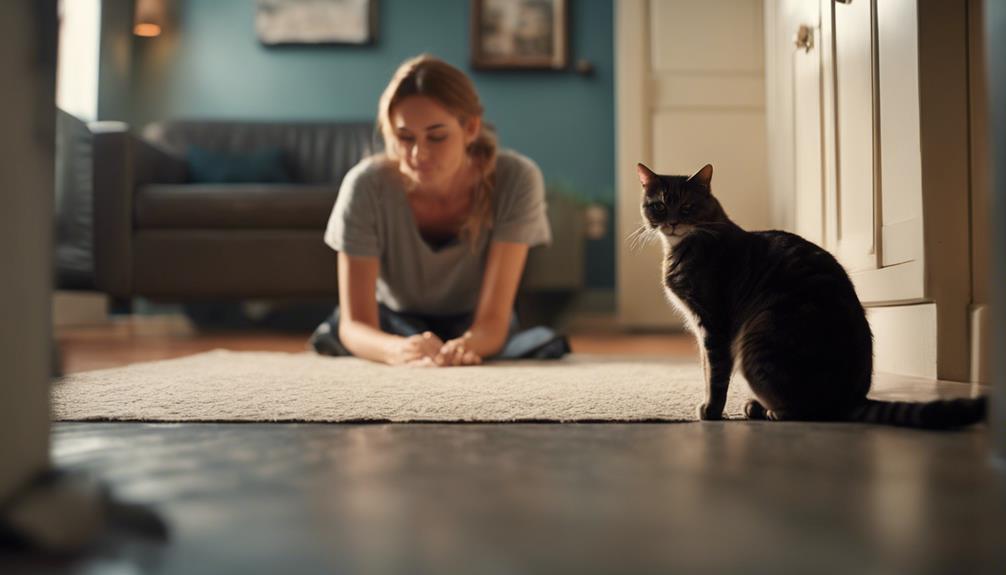
When establishing a cat socialization routine, it's essential to gradually introduce controlled social interactions. These interactions play a crucial role in helping cats become more comfortable with human interaction and other pets.
Here are some key strategies to consider:
- Controlled Supervision: Always supervise the interactions between your cat and other animals or people to ensure safety and positive experiences.
- Gradual Exposure: Introduce social interactions slowly, allowing your cat to adjust at their own pace to prevent stress or fear.
- Structured Introductions: Create a calm and controlled environment for social interactions, avoiding sudden or overwhelming situations.
- Controlled Environment: Provide a safe and secure space for interactions, minimizing any potential stress triggers for your cat.
Monitoring Progress and Adjusting Accordingly
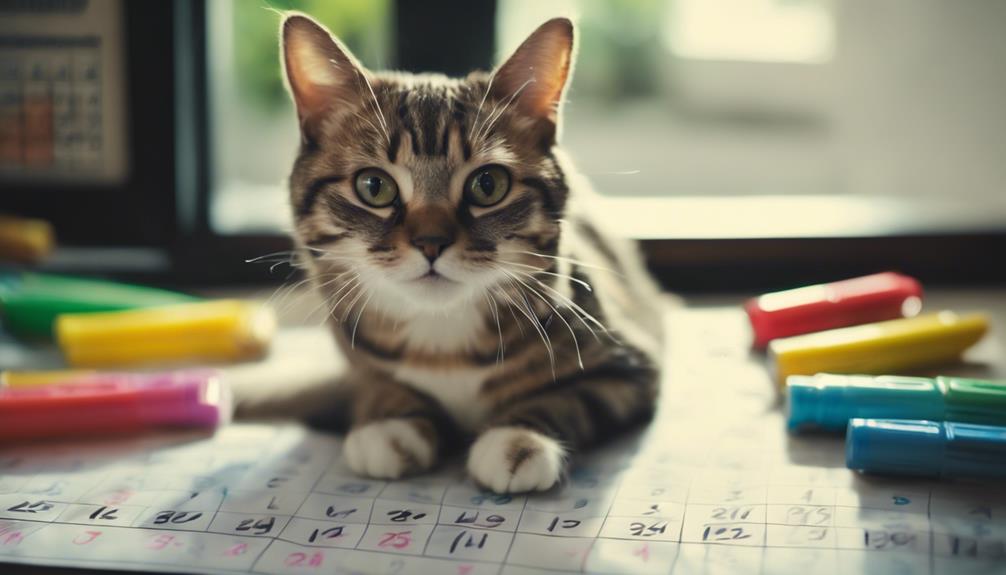
Monitoring your cat's progress and making necessary adjustments is crucial for successful socialization efforts. Tracking improvements allows you to see what's working well and where there may be challenges.
Observing your cat's behavior during social interactions can provide valuable insights into their comfort level and overall response. If you notice positive changes, such as increased confidence or reduced signs of stress, continue reinforcing those interactions. On the other hand, if your cat seems anxious or displays aggression, it's essential to modify your strategies accordingly.
Evaluating results is key to understanding the effectiveness of your current approach. Take note of any patterns or trends in your cat's behavior to determine the impact of your socialization routine. If progress is slow or setbacks occur, don't be discouraged. Instead, consider adapting your approaches to better suit your cat's needs. This may involve introducing new socialization techniques, adjusting the pace of interactions, or seeking guidance from a professional behaviorist.
Frequently Asked Questions
How Can I Tell if My Cat Is Feeling Overwhelmed or Stressed During Socialization Sessions?
Recognizing signs of stress in cats during socialization sessions is crucial. Watching for flattened ears, dilated pupils, or excessive grooming can signal overwhelm. Setting boundaries and respecting cat communication cues will help create a positive socialization experience.
Are There Specific Breeds of Cats That May Require Different Socialization Techniques?
Certain cat breeds may present unique socialization challenges due to their temperaments. Handling shyness in cats like Siamese or Maine Coons might need tailored approaches. Understanding breed differences can enhance feline interactions and help create a successful socialization routine.
What Should I Do if My Cat Shows Aggressive Behavior Towards Other Animals During Social Interactions?
If a cat displays aggressive behavior towards other animals during social interactions, immediate action is necessary. Aggression management through behavioral training can help. Observing socialization progress and understanding communication cues are key to fostering positive interactions.
Can Older Cats Benefit From Socialization Routines, or Is It Mainly for Kittens?
Older cats can benefit greatly from socialization routines. Regular interaction helps maintain their cognitive function, prevent loneliness, and decrease stress. Introducing new experiences gradually can positively impact an adult cat's overall well-being and quality of life.
How Long Does It Typically Take for a Cat to Become Comfortable With Socializing With Other Animals?
Socialization progress varies based on the cat's personality and past experiences. Common challenges include fear and territorial behavior. With patience and positive reinforcement, cats can typically become comfortable socializing with other animals within a few weeks to a few months.










